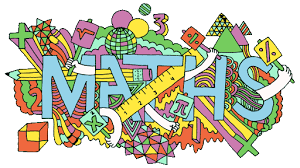Independent Math Tasks
As we investigate the concept of STRUCTURE in numbers, I have provided a variety of independent and collaborative tasks to explore our math content and curricular competencies.
The tasks involve playing games and analyzing them, making visual representations of math concepts, creating a math rap, answering math questions online and in a book, and more.
Students have a lot of choice, and they can complete tasks in any order. Depending on how they feel, they can work with a partner at a large table, or choose to sit alone for a bit at a private desk. I hope it will provide everyone with the appropriate level of engagement they need to explore our math curriculum with depth and complexity. If anyone needs help with the questions, I am here to guide and to teach students one-on-one.
The task list is kept in the red binder. Red binders can be taken home as long as they come back to class each day. I will give time in class each day and all games and tools are available in class. Websites to explain the games, as well as more complex topics, are available under “Math” in the Articles of Interest.
The tasks allow us to investigate math content and curricular competencies across subject areas. As they work together or alone, students will be able to:
- Practice and discuss elements of good learning and work habits
- Use critical-thinking skills to obtain information and mathematical understandings
- Exchange ideas and build shared understandings about the math content.
- Integrate language arts and math, using language in creative ways to express math understandings.
- Answer critical-thinking questions, ask questions of their own, corroborate inferences, and draw conclusions using evidence.
- Collect simple data to provide evidence about their thinking
- Use graphs and venn diagrams to make comparisons and organize the data.
- Develop mental math strategies and abilities to make sense of quantities (Magic Number activities, Sumoku game, Quirkle).
- Visualize to explore mathematical concepts (Quirkle, Blokus, Venn Diagrams)
- Use technology to explore mathematics (iPad videos, Math is Fun website, Domain of Science YouTube Channel, and more.)
- Develop, demonstrate, and apply math understandings through play, inquiry, and problem solving.
- Communicate math understandings in many ways.
- Work with addition and subtraction, multiplication and division, and multiples and factors according to their abilities and grade level.
- Explore patterns found in numbers and how they can be represented both visually and numerically.
- Investigate number concepts such as types of numbers (irrational, rational, integers, etc.), number lines, prime and composite numbers, and more.
Enjoy our math tasks!
Ms. D


